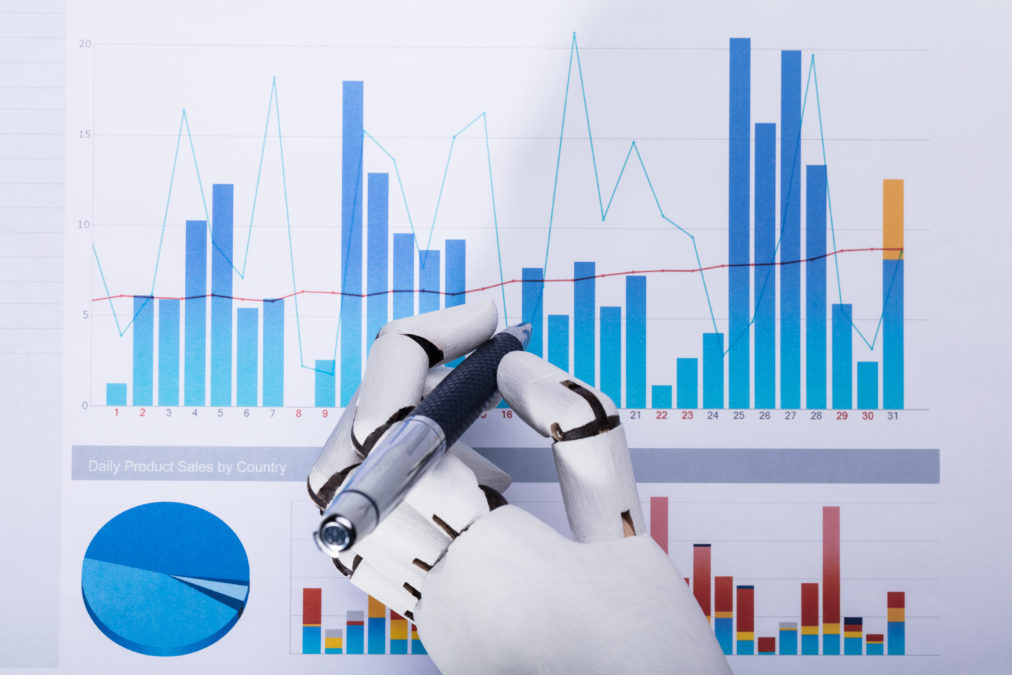Over the past 20 years, investment management has undergone an aggregation revolution, where advances in information technology have sped up the depth, width and speed of information reaching investors. In the next five years, investment management will go through an analytical revolution, AI and investing will come together and revolutionise the way that investment information is analysed, packaged and presented to investors.
This will change the face of investment management, with professional investors able to make informed investment decisions faster and will for the first time give private investors access to the same advanced stock selection and portfolio construction tools as the professionals.
At the heart of this revolution is Augmented Intelligence, harnessing the power of AI combined with human decision making. As Paul Tudor Jones famously said, “No human is better than a machine, but no machine is better than a human with a machine”.
Wealth management companies could spend their IT investment more effectively
Outsourcing is still perceived as being an expensive alternative to managing functions in-house
The impact of AI on investing
For the first time, artificial intelligence can now bring a whole new perspective to investment decision making. The power of AI is its ability to tirelessly look for, combine, and distill signals from masses of noisy data already available in the marketplace. By bringing out “interesting” insights, whether to confirm or enhance a suspected salient point or by identifying one that might have been overlooked otherwise, AI is the humble ‘idiot-savant’ that can usefully take on the tedious data-intensive work that humans are not best suited for.
For example, by deploying artificial intelligence to analyse investment information, the investor can:
With or without human-level intelligence — AI has finally come of age
- Perform advanced stock screening, instantly identifying and triaging the handful of stock opportunities within global markets that both fit one’s investment preference and carry a higher than average chance of outperforming in the future. This can happen instantly, drawing from sources ranging from financial information providers (e.g. Reuters), to official filings (e.g. the SEC’s Edgar database), to big data aggregators (e.g. Google), to personal data (e.g. record of past trade decisions). Investors are presented with a visual representation of the key signals extracted by the AI engine and, just like in a video game, can rapidly absorb and weigh the relevant insights to decide on an appropriate course of action, which ultimately translates in better-informed stock selection and better returns.
- Dispense with slow cumbersome portfolio management systems, by being able to visualise and control real-time, the active risks embedded in a portfolio, as well as access suggestions to mitigate unwanted exposures, all without the need for a PhD in Maths. Investors will now be able to easily target and monitor the specific risks they know something about and intend to profit from (e.g. a turnaround at a manufacturing firm), without unknowingly over-exposing their portfolio to sources of uncertainty they know nothing about (e.g. the result of an election or future levels of interbank lending rates). The key benefit of such risk control and transparency is better returns and more learning.
- Rely on smart monitoring systems as markets, portfolios and holdings’ alerts get derived from an array of signals, not simply flag an absolute share price declines.The AI engine may alert the investor, often before most of the price decline, to consider selling all or part of a holding, or reducing exposure to a risk factor, or indeed looking into the recent news flow of a company for possible reasons to turn more bearish (or bullish) on the stock. Such a development vastly contributes to reducing investor biases with less vigilance required (less decision fatigue), less false alarms (less over-trading), and more balanced perspectives (less overconfidence), all contributing to better investor performance.
- Benefit from the limitless scalability and versatility of the technology. Modern user interface and data analytics facilitate the delivery of complex combinations of data sources, and cloud-based technology makes it cheap to do so. All of the above can also be applied to inform investors’ fund selection and performance monitoring, so rather than relying on top-down backward-looking analysis, AI can deliver instant insights based on a bottom-up analysis of the funds’ holdings
Tech predictions from The Economist in 2019: Facial recognition to AI regulation
Power to the private investor
A key feature of the internet and smartphone has been the democratisation of services, allowing the individual to go direct. In the same way that hotel and travel sites have given the same power as any travel agent to the individual holidaymaker, artificial intelligence can do the same for the private investor.
For the past few decades, investment management has been increasingly pre-packaged – in mutual funds, ISAs, trackers, etc. And many of the new developments which attempt to deliver lower cost options to investors, like robo-advice or ETF funds, are a continuation of this packaged route (there are more ETFs than stocks to invest in!).
In tandem with this, direct investing in shares has become cheaper and simpler with the growth of innovative share trading sites, but without a basic understanding of things like risk and value, easier access merely means higher loss, especially amongst younger generations that have grown accustomed to rising markets and to a low volatility environment.
The AI analytical revolution has the potential to open up direct investing to a whole new audience, both young and old, who are able to take control with confidence and package up their own investment portfolios with a much greater understanding of risk and return, simply through their smartphone.
We therefore expect to see not only a revolution in how investment information is analysed, but also in the way that private investors behave, as power is returned back to the people to make their own, confident investment decisions.
Article by Raphael Fiorentino, CEO of Butterwire







